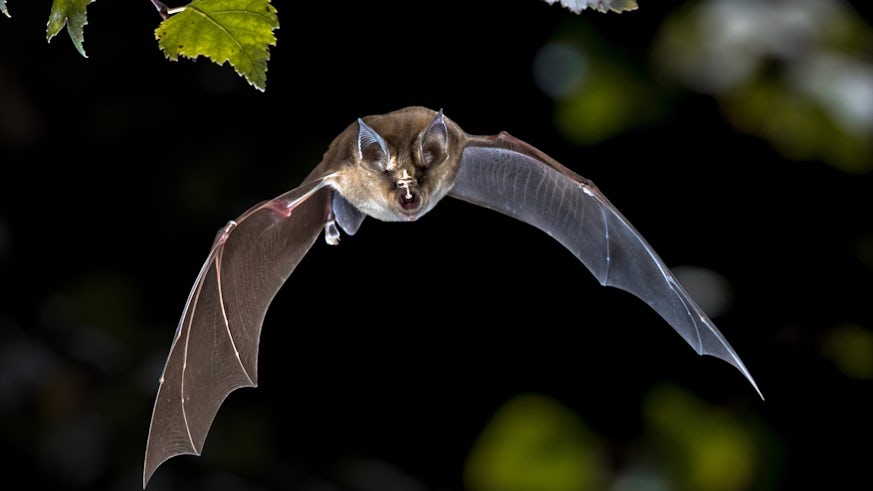Researchers show how bats get back home to roost
15 January 2024

Bats fly back to their roosts in a “leap frogging” motion ensuring they can stay out as long as possible foraging for food, researchers have found.
The team from Cardiff University and the University of Sussex, developed a model from trajectory data on greater horseshoe bats – one of 18 species in the UK – to better understand how they move and engage with their environment.
The first-of-its-kind study in bats shows that their motion can be separated into two major phases – an initial spread and a return phase.
Their findings, published in the Bulletin of Mathematical Biology,could help ecologists, conservationists and those working in the construction sector.
Lead author Dr Thomas E. Woolley, a Senior Lecturer at Cardiff University’s School of Mathematics, said: “The initial spread is staple for many foraging animals and the motion characteristics present in the data are quite easy to understand mathematically-speaking. Specifically, a simple diffusion model is consistent with the initial dispersal motion, representing the bats spreading out to find a space in which to forage for food.
“The return phase is much harder to understand not least because the data is extremely difficult to obtain. And so, until now, there doesn’t appear to be any work on modelling this type of roost-bound journey, which could be vital to conservationists who are working tirelessly to combat population decline."

In our study, we showed a “leap frogging” model of bat movement was consistent with current bat movement data. Namely, our model predicts that bats that travel furthest from the roost start their return journey first. These are followed by the next outermost bat and this cascading motion is repeated by one after another, from the edges of the foraging range back to the roost.
The researchers used trajectory data – one of the few sets of its kind – obtained in Devon between May and June 2016 by Professor of Environmental Biology Fiona Mathews from the University of Sussex and a team of trained volunteers and ecologists.
They carried out a radio-tracking survey which monitored 12 greater horseshoe bats over a period of 24 nights.
The trajectories of 7 bats over 14 nights were extracted from the data for analysis, ensuring in each case a bat’s beginning and ending roost were the same.
Professor Mathews said: “Greater horseshoe bats are threatened across Europe. Progress has been made in protecting their roosts, but much less is known about how to conserve their foraging areas because tracking a fast-moving animal in the dark is very challenging: they can easily outpace a car on a country lane!
“Bats tend to clump together in space when they are resting, a phenomenon also found in species like bees, ants, rooks and penguins. However, to avoid competing with each other, they need to disperse away from this location to feed."
Being able to model these nightly movements will help us conserve their foraging grounds. In addition, it will help us to understand how they might start to recolonise areas from which they have been lost, such as the south-east of England.
The team plans to further test their theory using static detector microphones to track bat call density throughout the night.
Less labour intensive than bat tracking and a constant source of surveillance through the night, microphone data would allow the team to see when and where the density of returning bats tends to concentrate – at the roost or moving in from the boundary of their foraging range.
Dr Woolley added: “By better understanding bat movement, we can more accurately predict roost locations and, in doing so, aid conservation efforts.”
“This is important because bats are legally protected in the UK and many are suffering population declines due to habitat loss.”
The study, ‘Bat motion can be described by leap frogging’ is published in Bulletin of Mathematical Biology and is part of a long-term collaboration between Dr Woolley and Professor Mathews modelling bat behaviour.
In 2022, they released an online app which uses publicly available data to predict bat flight lines.
The team says resources like this are important in the construction sector where pressure is growing to reduce the environmental impact of site builds on the surrounding habitats.




